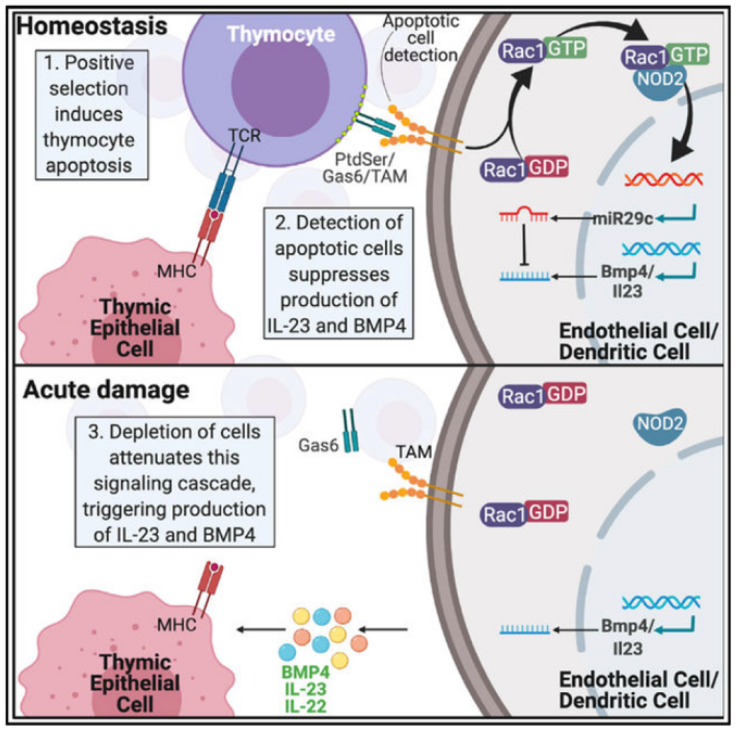Sinéad Kinsella, Cindy A Evandy, Kirsten Cooper, Lorenzo Iovino, Paul C deRoos, Kayla S Hopwo, David W Granadier, Colton W Smith, Shahin Rafii, Jarrod A Dudakov

The thymus, which is the primary site of T cell development, is particularly sensitive to insult but also has a remarkable capacity for repair. However, the mechanisms orchestrating regeneration are poorly understood, and delayed repair is common after cytoreductive therapies. Here, we demonstrate a trigger of thymic regeneration, centered on detecting the loss of dying thymocytes that are abundant during steady-state T cell development. Specifically, apoptotic thymocytes suppressed production of the regenerative factors IL-23 and BMP4 via TAM receptor signaling and activation of the Rho-GTPase Rac1, the intracellular pattern recognition receptor NOD2, and micro-RNA-29c. However, after damage, when profound thymocyte depletion occurs, this TAM-Rac1-NOD2-miR29c pathway is attenuated, increasing production of IL-23 and BMP4. Notably, pharmacological inhibition of Rac1-GTPase enhanced thymic function after acute damage. These findings identify a complex trigger of tissue regeneration and offer a regenerative strategy for restoring immune competence in patients whose thymic function has been compromised.
